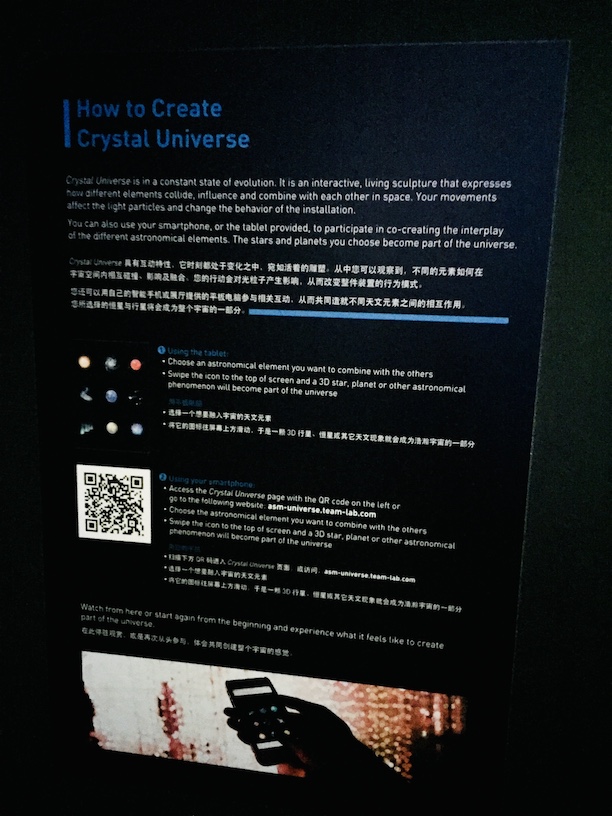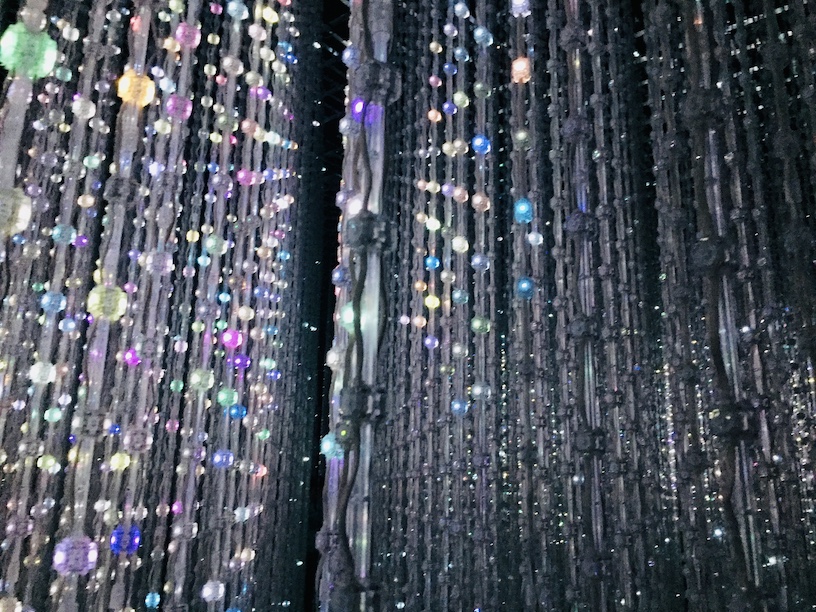I first came across teamLab's Crystal Universe at the ArtScience Museum in Singapore, November 2016. I had only been working with the web at the time, and it was the first time I had seen anything like it and my mind was blown.

It was the combination of all the blinking lights, the clever use of mirrors, the swelling music, but most importantly, the interaction. With Crystal Universe, anyone could control the pattern that the lights were blinking just by going to a URL and flicking a planet or star up and off the screen (that attention to detail of an upward flick gesture was particularly ingenious to me, a metaphor for "uploading" the astronimical phenomenon into the crystal universe). There was something empowering and magical about uploading a pattern and hearing the gasps of delight echo around the room.
That's what transformed it from "just" a huge array of blinking LEDs to an experience for me.
the technical
I can't begin to imagine how many LEDs Crystal Universe uses, what the wire management looks like, how the data doesn't degrade from LED to LED in a strip (or does it degrade and it's ok since there are just so many LEDs?), and how many power sources it might employ.
All I can go off of are some blurry close-up photos I've taken in previous visits:


And note the difference in implementation even with a two-year difference (2016 vs. 2018). In 2016, LEDs are bulbous and there are gray wires that run between them outside of the weather stripping. In 2018, the casing for the LEDs are flatter and there is no longer any visible wiring between the LEDs.
I'd also guess that they use some pixel mapping software that run on computers connected to the internet, that queue up the corresponding pattern whenever someone "uploads" an astronomical phenomenon to their web server.